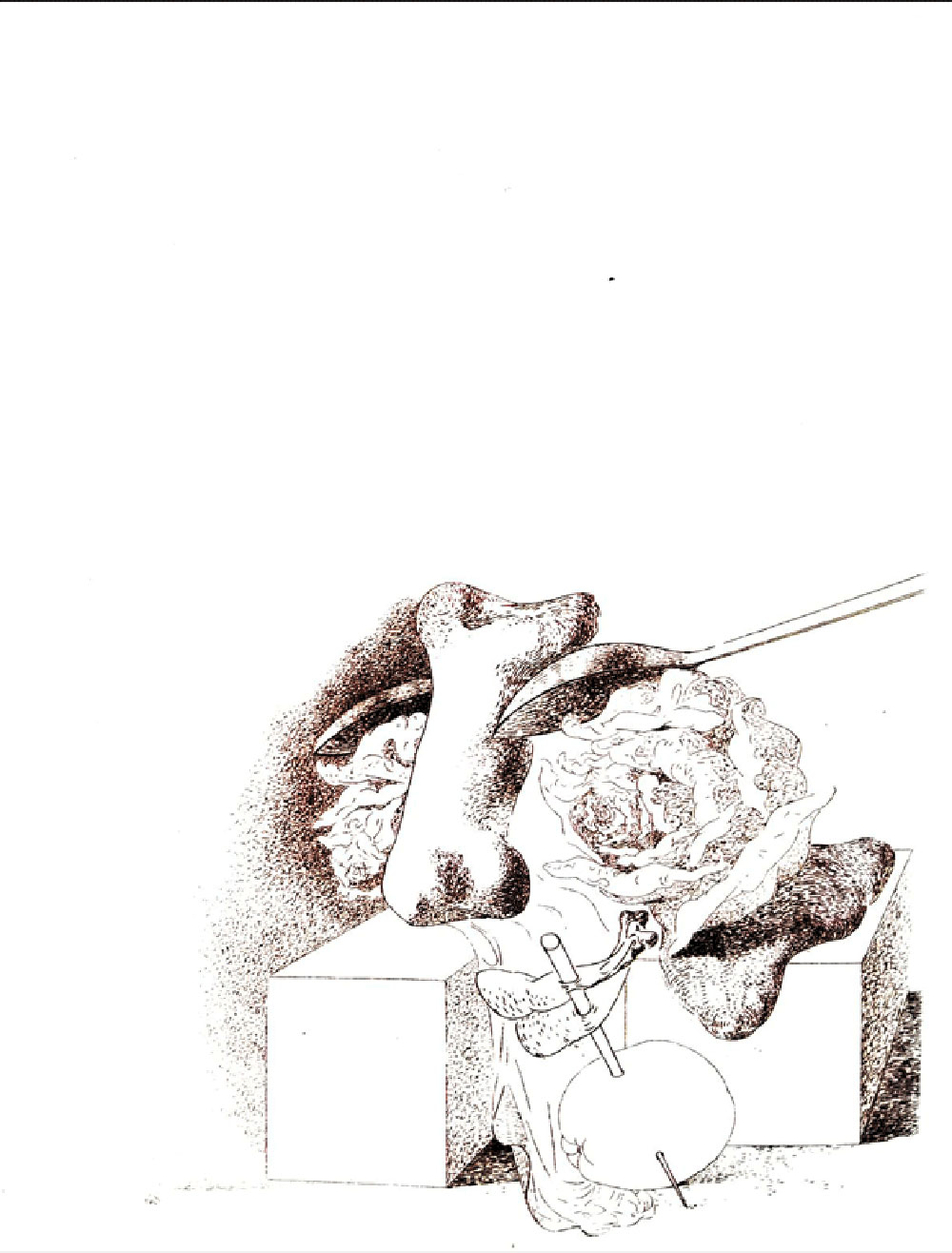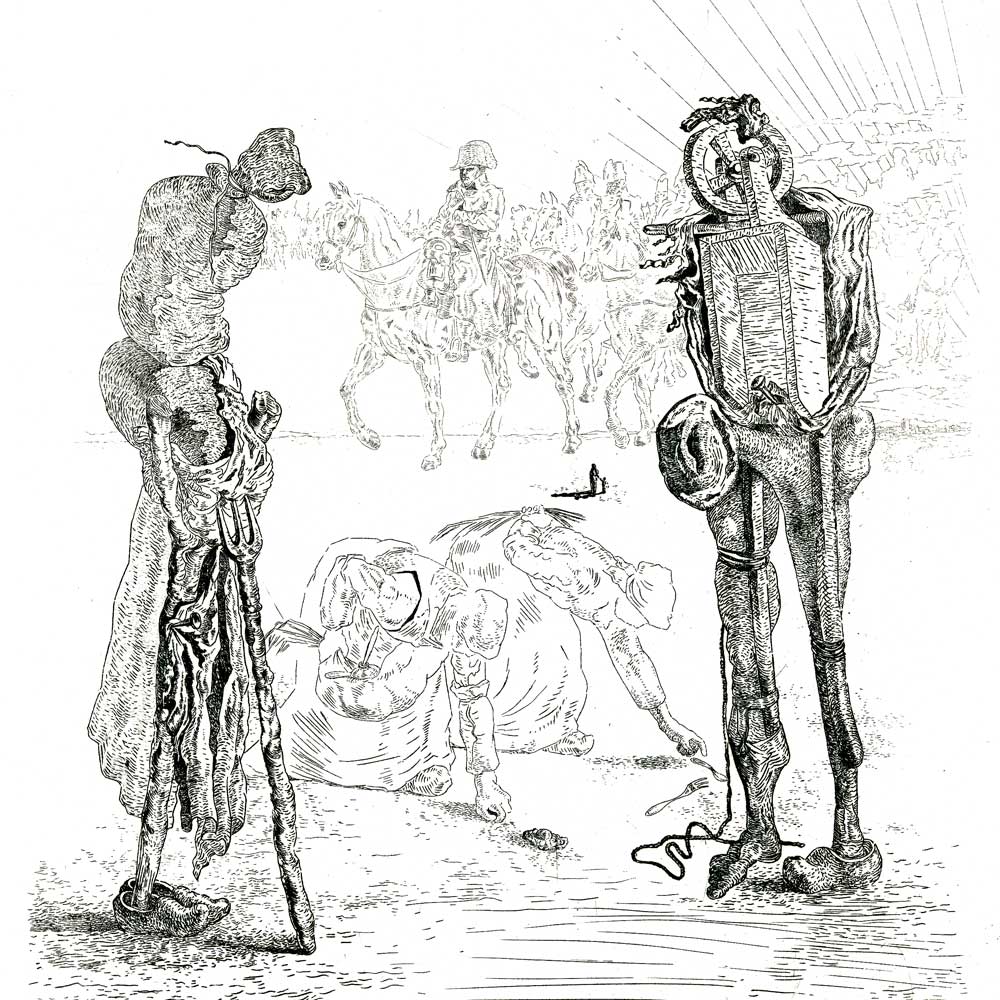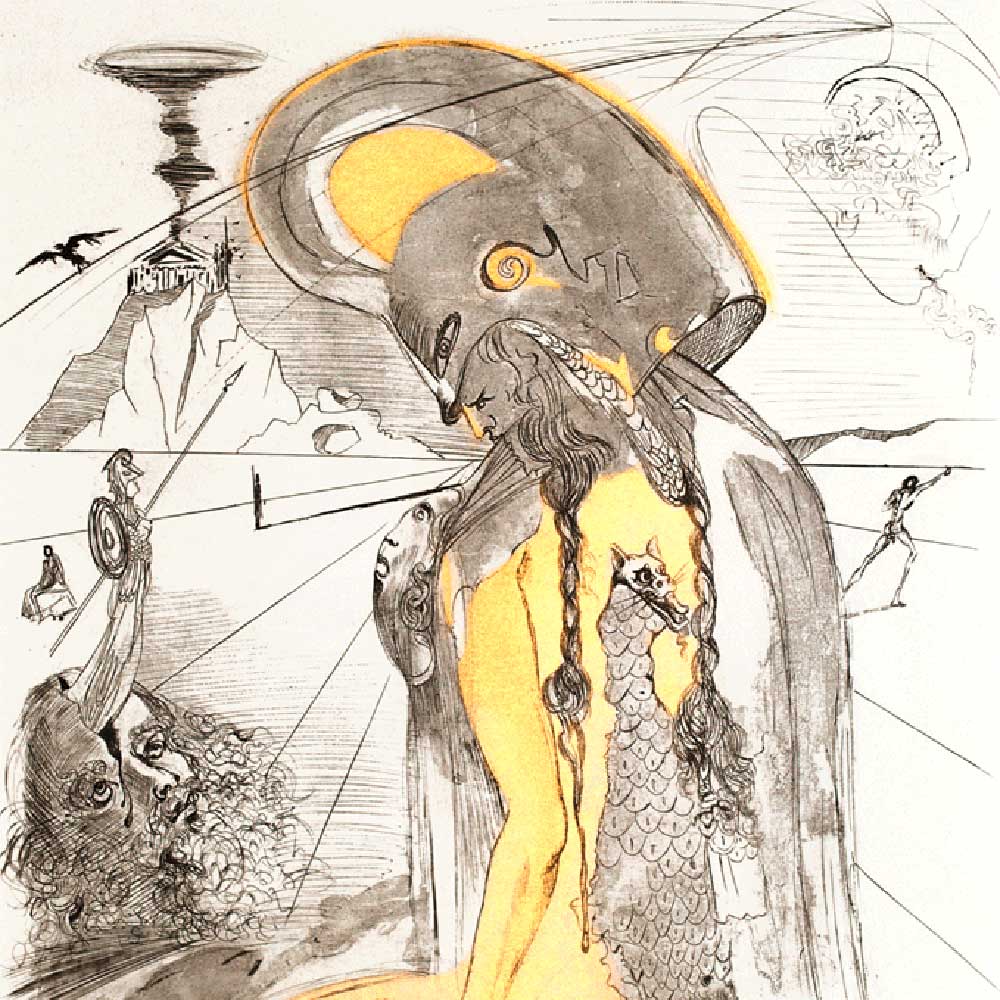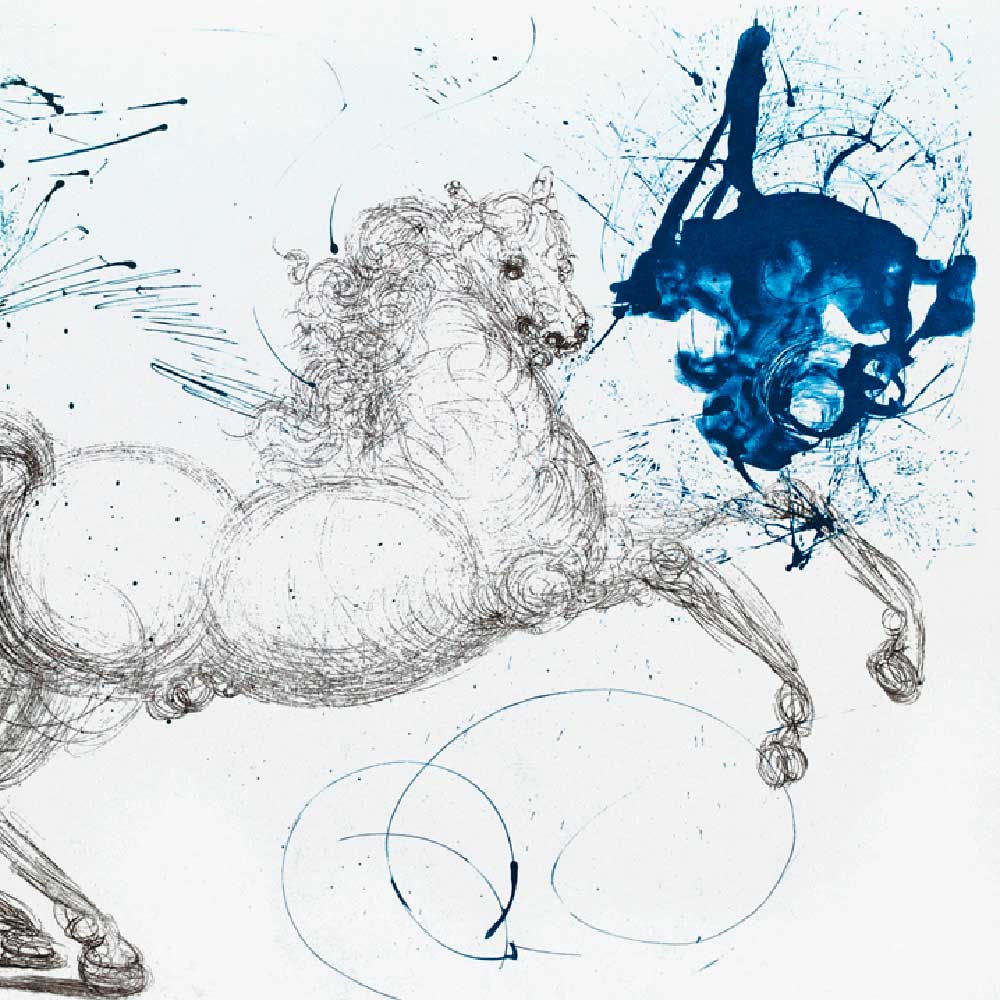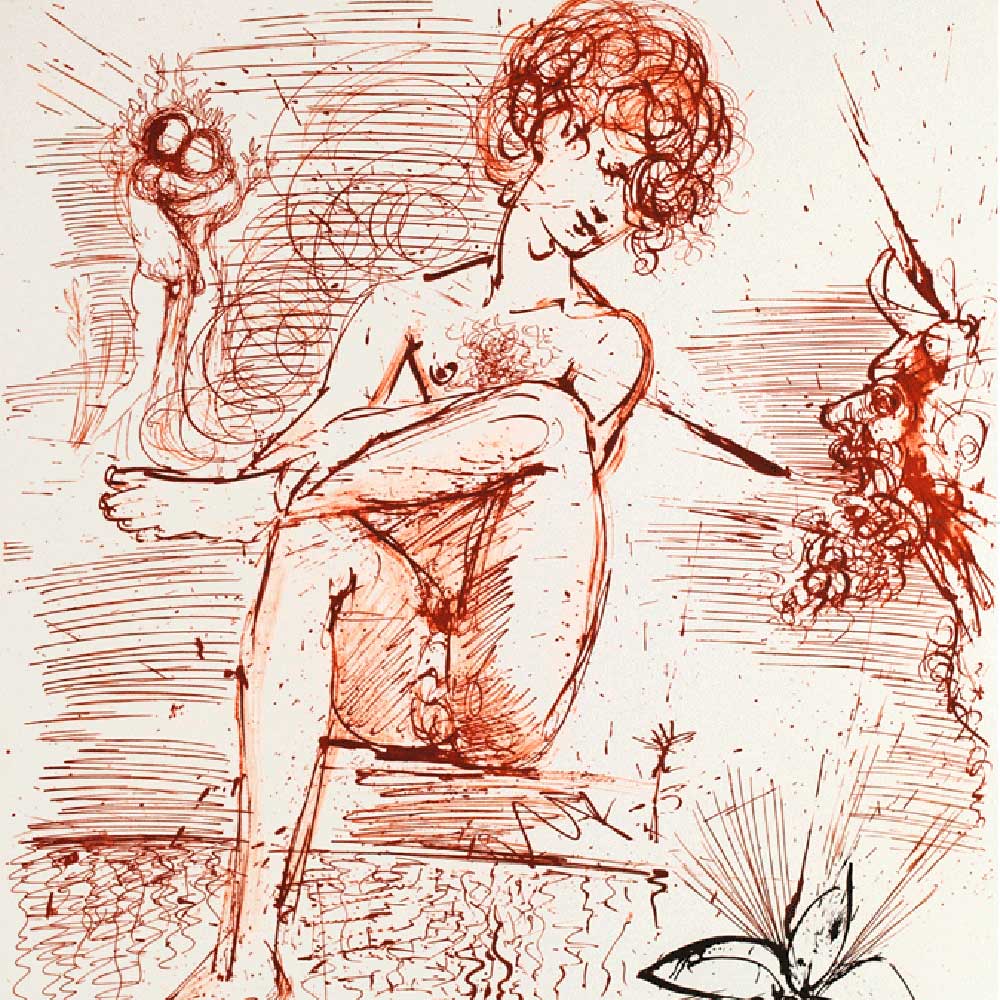ETCHING PROCESS
* * *
Unlike a lithograph, whose base is a stone that can be drawn to a very large number of copies, the engraving has for support a copper plate to be incised. The virgin copper plate is covered with a varnish and engraved by the Artist with steel, ruby or diamond points, according to the thickness and the rendering of the desired lines. In addition, this plate being then inked and passed under the press for its printing on paper, this process obliges the artist to design his subject «upside down».
It is therefore not a simple process for artists who practice this technique and no one can improvise «engraver». It is at this stage that we distinguish the «original engravings» of which the Artist himself incised the copper, of the «interpretation engravings» transcribed on copper plate by a third. This distinction (also valid for other graphic arts and sculpture) that the general public knows little and many professionals pass under silence, is however essential to determine the value of an engraving.
The copper plate finally finished by the Artist, this one is carried in a specialized workshop for its printing on paper, in accordance with the quantity determined in the contract between the Artist and its Publisher on each kind of papers. The copper plate is inked, wiped and then placed (engraved side in the air) under the press (mechanical or arm) and covered with paper and diapers to avoid creases when passing under the press. Once this set is passed under the roll, the engraving is printed. The printed etching is delicately separated from the copper and then put to drying under pressure. The copper is then re-inked and the operation renewed for the printing of a new proof.
Once the engravings are dried and recovered from the Atelier, they are then numbered in pencil according to the contract and brought to the Artist for signature, usually in pencil and lower right under the subject on each proof.
In the case of Salvador DALI, the latter had studied during four years of his youth at the Fine Arts School of Madrid all the engraving techniques, so that he mastered all the subtleties. It is also for this reason that the ARGILLET couple wanted throughout their collaboration with DALI, to edit only copper engravings with him and not lithographs, in order to obtain works made from A to Z by the hand of the Master. In addition to the less academic methods that DALI sometimes used to incise his copperplates such as nails, butcher’s fangs or octopus tentacles (for example in the Mythologie series), the Master reworked some plates with the help of needles, to obtain certain microscopic details. This is particularly remarkable on the «Revolver à Cheveux Blancs» and in «Maldoror Songs» 1930s etchings.
For those wishing to deepen their knowledge on these different engraving processes, we recommend the reading of the «Technical Dictionary of L’Estampe» by André Béguin, as well as the visit the Rotonde Sully room in Musée du Louvre, dedicated to Graphic Arts and where all these processes are meticulously exhibited and detailed.

